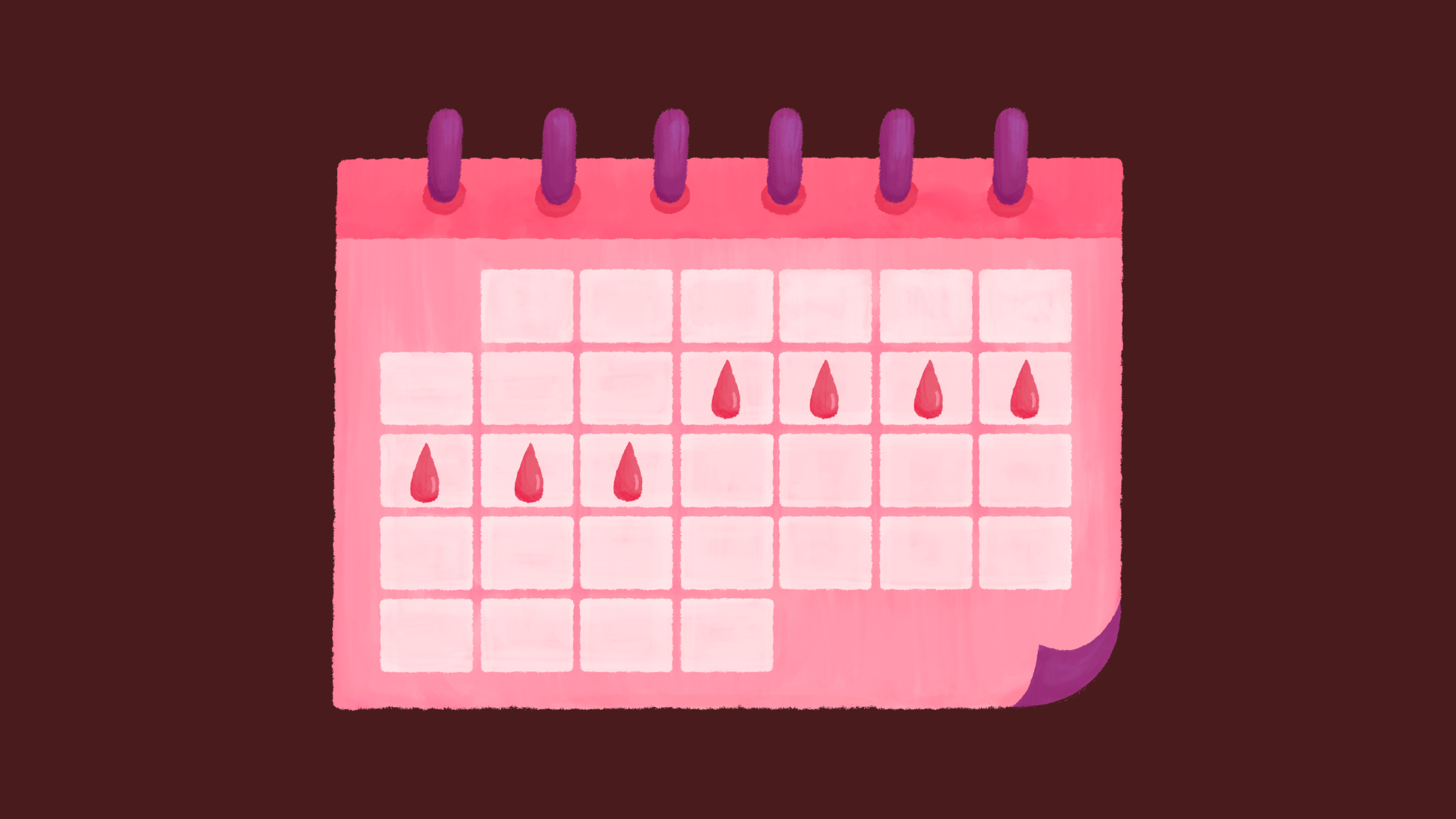Cycle syncing and exercise: How to match it up.
Syncing up your exercise and menstrual cycle can be beneficial. But it's hard to know what to do and when. Check out this comprehensive guide.

Women and people who menstruate exercise differently to men. Men go through a 24-hour hormone cycle, where testosterone is greatest in the morning and gradually drops before sleep. Women experience a far more complex 28-day hormonal cycle that utilises four hormones: oestrogen, progesterone, follicle stimulating hormone (FSH) and luteinising hormone (LH). Each of these hormones has a different impact on energy levels and muscular strength throughout the month. Here we explain how you can match your cycle with your training.
What is 'menstruation' or a 'period'?
Menstruation is a part of the menstrual cycle when a female/woman sheds the lining of the uterus over a period of 4-7 days. The uterus lines itself with blood and tissue in the lead up to menstruation in preparation for pregnancy. Menstruation is colloquially termed as a 'period'.
What is the menstrual cycle?
The menstrual cycle can be divided into four phases:
- Menstruation: This is the phase during which bleeding occurs. It typically lasts 3-7 days.
- Follicular phase: This phase begins on the first day of menstruation and ends when ovulation occurs. During this phase, the follicles in the ovaries begin to grow and mature.
- Ovulation: This is the phase during which an egg is released from one of the ovaries. It typically occurs around the middle of the menstrual cycle.
- Luteal phase: This phase begins after ovulation and ends on the day before menstruation begins. During this phase, the corpus luteum (the empty follicle that remains after ovulation) produces progesterone.
What are the key hormones of the menstrual cycle?
There are four key hormones to menstrual cycle. During the cycle, these hormones will fluctuate higher and lower depending on the menstrual phase. This article from the Clue app explains the menstrual cycle in much more depth.

The two main female reproductive hormones, oestrogen and progesterone, have a significant impact on energy levels throughout the menstrual cycle.
- Oestrogen: Oestrogen levels are highest during the follicular phase and ovulation. Oestrogen helps to increase energy levels and improve mood.
- Progesterone: Progesterone levels are highest during the luteal phase. Progesterone can cause fatigue, mood swings, and other PMS symptoms.
Two other reproductive hormones that are present in the menstrual cycle are:
- Luteinising hormone (LH): LH is highest at ovulation, and the drop in LH (if the egg is not fertilised) causes menstrual shedding. LH can cause increased fatigue and mood swings.
- Follicle stimulating hormone (LH): FSH plays a role in maturing follicles (eggs) and is highest early in the follicular phase. FSH can improve mood and energy, and make you feel stronger.

Exercise has a positive impact at all stages of the menstrual cycle.
How exercise impacts your menstrual cycle
Firstly, I want to preface that too much of anything will have a negative effect. We often hear about over-exercising (AKA compulsive exercise/addictive exercise) and orthorexia (a mental illness associated with the obsession to eat 'healthy' foods) in the media and the effects of this are real - see further below for the impact of over-exercising.
In the good news, there is no reason to believe or evidence to suggest that physiological exercise performance (i.e., lung function) is significantly impacted by menstrual cycle phase. There is a little evidence highlighting that physiological performance may be slightly impacted during the follicular phase - however, this is not significant. This means that if you are running a marathon and it lands on your period, during your luteal phase or any other menstrual phase, your physiological performance will remain the same and is unlikely to be impacted. You can feel confident that your menstrual cycle won't be a hindrance to your ability to exercise at a high performance [1].
However, there is evidence to suggest that the way you feel when exercising is impacted by your menstrual phase. This is especially true if you experience menstrual cramping. You may not feel as well as normal during your period for example, and this may impact your ability to exercise (especially during those first couple of days). On the other hand, during ovulation you may feel stronger and therefore, feel that you perform better.
With this in mind, the rest of this article is about syncing how you feel, type of exercise and your menstrual cycle. (BTW, there is also minimal to zero evidence to suggest that you have to do this at all - if you feel good, then go for it!).
Exercise According to Your Menstrual Cycle
The best way to exercise according to your menstrual cycle is to listen to your body and adjust your workouts based on how you are feeling. There is a good general consensus that exercise is beneficial for your health at all stages of your menstrual cycle. You should never feel that you cannot exercise because of your period, unless indicated by your doctor.
During the follicular phase, you may have more energy and feel up for more intense workouts. Generally, women also tend to feel strong during their ovulation phase due to the spike in oestrogen and FSH. During the luteal phase, you may feel more tired and want to focus on lower-intensity workouts.
Here is a general guide to exercising according to your menstrual cycle:
- Menstruation: If you are experiencing heavy bleeding or cramping, you may want to take a break from exercise or do light exercise, such as walking or stretching.
- Follicular phase: This is a good time for high-intensity workouts, such as running, HIIT, and strength training.
- Ovulation: This is a good time to continue with high-intensity workouts and strength training.
- Luteal phase: This is a good time for lower-intensity workouts, such as walking, swimming, or yoga.
It is important to note that this is just a general guide. You may need to adjust your workouts based on how you are feeling on a daily basis.
Here are some additional tips for exercising according to your menstrual cycle:
- Stay hydrated. Drink plenty of water before, during, and after your workouts.
- Fuel your body. Eat a healthy meal or snack before your workouts and eat a recovery meal or snack afterwards.
- Listen to your body. If it feels wrong, stop and re-evaluate. Always see a doctor if you are uncomfortable or in pain for an extended period of time.

Exercise can help your menstrual pain!
Exercise and Menstrual Pain
Exercise can help to reduce menstrual pain in several ways. It can help to increase endorphins, which are hormones that have pain-relieving effects. Exercise can help to improve circulation, which can reduce cramping. Exercise can also help to strengthen the muscles in the abdomen and pelvis, which can also help to reduce menstrual pain.
It is important to note that not all types of exercise are appropriate (read: types of exercise, not that exercise itself is not appropriate) for all women during their period. Some women may find that high-impact exercise, such as running or jumping, exacerbates their menstrual pain. Other women may find that low-impact exercise, such as walking, swimming, or yoga, is more comfortable.
If you are considering exercising during your period, it is important to listen to your body and start slowly. If you experience any pain, stop the activity and rest.
The dark side: Relative Energy Deficiency Syndrome
Hand in hand with losing your period.
Relative Energy Deficiency Syndrome (RED-S)
Relative Energy Deficiency Syndrome (RED-S) is a condition that occurs when an athlete does not consume enough calories to support their training and activity levels. This can lead to a number of health problems, including fatigue, decreased performance, and increased risk of injury.
RED-S is a particular concern for female athletes, as they are more likely to experience energy deficiencies due to the hormonal changes that occur throughout the menstrual cycle. RED-S often goes hand-in-hand with amenorrhea - when you lose your period due to over-exercising. This happens because you may be under-fueled, you may have a very low body fat, or a chronic imbalance of reproductive hormones. The menstrual cycle is all about reproduction at the end of the day - if your body is not in a position to healthily carry a baby, it will not give you the opportunity. It can be very traumatic losing your period due to this (other than contraception for example) and it can take a long time for it to return.
There are a number of things that female athletes can do to reduce their risk of RED-S, including:
- Eating a balanced diet that is high in calories and nutrients
- Consuming enough carbohydrates to support their training and activity levels
- Listening to their bodies and taking rest days when needed
- Tracking their menstrual cycles and adjusting their training and nutrition accordingly
Reference
[1] McNulty, KL., Elliott-Sale, KJ., Dolan, E., et al. (2020). The effects of menstrual cycle phase of exercise performance in eumenorrheic women: A systematic review and meta-analysis. Sports Medicine, 50, 1813-1827. doi: https://doi.org/10.1007/s40279-020-01319-3

